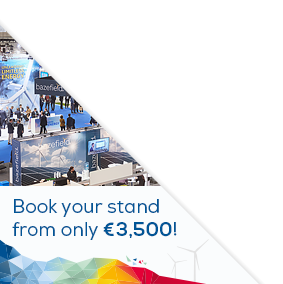Posters
Siblings:
ProceedingsProgrammeProceedingsSpeakersPostersContent PartnersElectrification StageMarkets TheatreR&I ActivitiesStudent DayProgramme Committee & abstracts reviewersPresenters dashboardCome meet the poster presenters to ask them questions and discuss their work
We would like to invite you to come and see the posters at our upcoming conference. The posters will showcase a diverse range of research topics and provide an opportunity for delegates to engage with the authors and learn more about their work. Whether you are a seasoned researcher or simply curious about the latest developments in your field, we believe that the posters will offer something of interest to everyone. So please, join us at the conference and take advantage of this opportunity to learn and engage with your peers in the academic community. We look forward to seeing you there!

PO077: The importance of selection your Operation & Maintenance (O&M) logistical concept for floating wind from a turbine availability perspective
Florian Guillebeaud, Senior Consultant, PEAK Wind
Abstract
Collaborative efforts are needed in the offshore wind industry, to optimize offshore wind farm (OWF) operations and minimise availability losses. As the floating wind industry matures and more sites will come into operations with high yield expectations, it is key to assess the risks related to troubleshooting offshore the units which will often be installed further offshore where met-ocean conditions are (potentially) harsher. This study highlights the importance of assessing O&M logistical concepts for floating wind turbines through the prism of turbine availability. Revenue losses generated by downtime of offshore turbines have always been a key industry focus. Assessing the potential availability losses of floating offshore wind turbines (FOWT) is key to refining the Operations & Maintenance (O&M) strategy, Operational Expenditure (OPEX) budgets, yield and Internal rate of return (IRR). Aside the quantitative analysis, performed via a time series in Python, practical risks related to accessibility (1), workability (2), maintainability (3), reliability (4) are presented to the audience. This work is based on PEAK Wind in-house tools and expertise from real-word experience client engagement. It focuses on quantifying the downtime related to troubleshooting activities and highlighting the potential impact of floating-specific risks (1) to (4) on downtime, compared to bottom fixed. Overall results show higher downtime related to troubleshooting at FOWT. In comparison to bottom fixed, FOWT are more challenged by on-site conditions with higher uncertainties of transfer success rate due to floating foundation motions (and impact of (1) to (4) on downtime).








Follow the event on: